Easy Pan Seared Swordfish Recipe
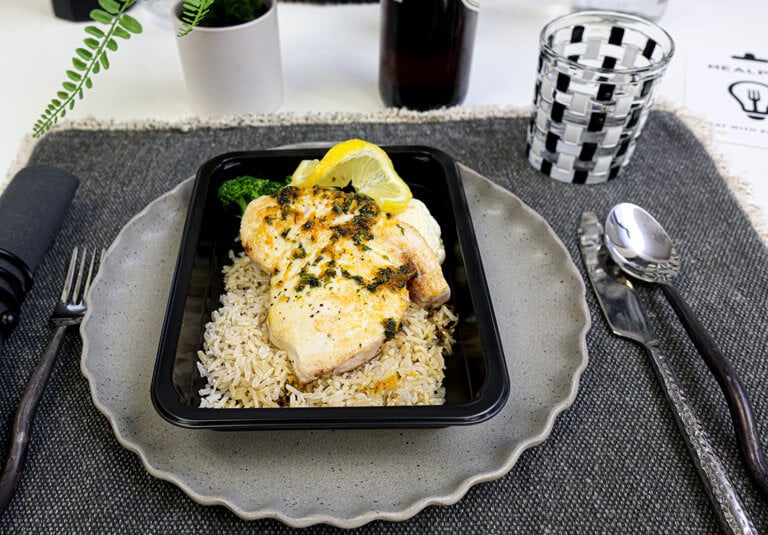
Swordfish Recipe Card
Pan Seared Swordfish Recipe Table of Contents
Pan-seared Swordfish Recipe Description
Originally fished by harpoon, swordfish are now caught mostly by longline and gillnet, often on the high seas hundreds of miles from land. The firm, juicy white meat of swordfish is a favorite of chefs. Swordfish is moist and flavorful with a slightly sweet taste. It is moderate high oil content lends a firm, meaty texture similar. The lean white fish is similar to the Marlin.
According to the Monterey Bay Aquarium Seafood Watch swordfish caught in the Atlantic or Pacific Oceans with harpoons, pole-&-lines, or trolling lines is the best-choice for sustainability.
Swordfish Recipe Ingredients

Swordfish Recipe Ingredients.
Swordfish Loin – 6oz
Salt – To Taste
Honey 1/4 Cup
Pepper to taste
Parsley 1/4 Cup
Zest of 1 Orange
How to Clean Swordfish Fillet Video
Swordfish will mostly come in 6oz to 7oz fillets at the store. If it does not, it may require minimal prep work. The first think you need to do is take out the myoglobin, which is the white line in the middle of the fillet, which has a mineral/strong flavor to it. Swordfish skin that is not dried out is a sign of freshness of the fish but it is quite heavy if eaten, so it should be removed before cooking.
Kitchen Tools for this Pan Seared Swordfish Recipe.
Pan
Measuring Cups
Spoon
Thermometer (ideal serving temp of swordfish is 140° Farenheit)
Convection Oven
Chef’s Knife
Cheese grater (for orange zest)
Swordfish Recipe Step-by-Step Cooking Directions
-
Prepare your relish/sauce for the swordfish recipe. We will put this on top of the swordfish after searing.

Swordfish Sauce.
-
Mince the parsley, measure out the liquid honey and then scrape one orange using a fine-mesh cheese grater. Wash the orange under running water, then scrape the orange by running it over the grater applying gentle pressure. Make sure to only take the orange peel and not go too deep into the layer below the orange skin. See demonstration of how to extract orange zest below:
-
Heat the pan with light olive oil and add the minced parsley.

Add the minced parsley.
-
When the parsley is wilting add the orange zest.
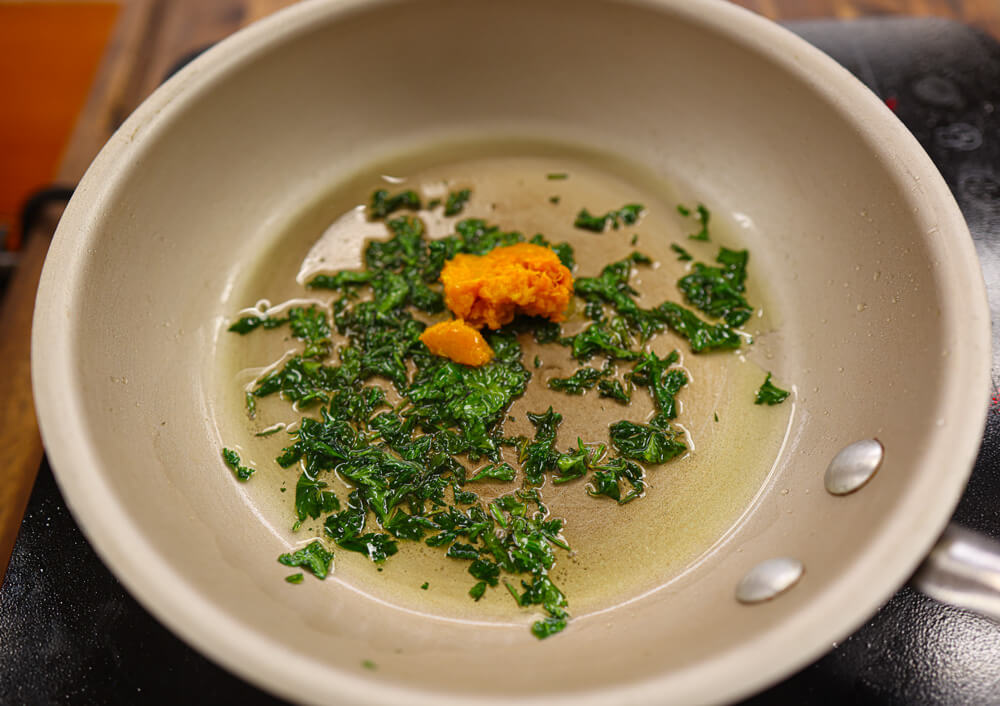
Add Orange Zest.
-
Add some fresh, liquid honey.
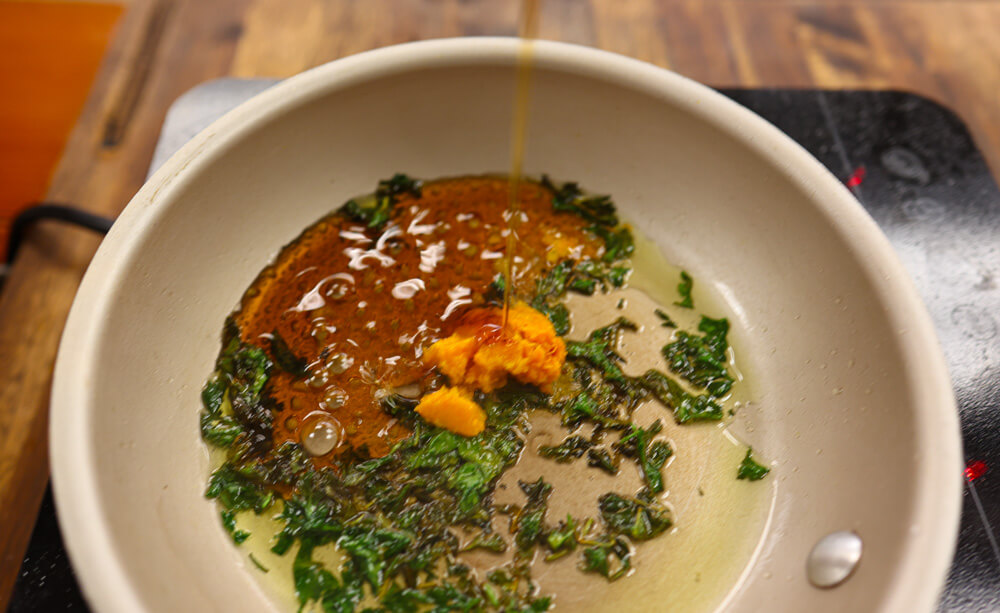
Slowly Pour the Liquid.
-
When the sauce begins to foam turn off the heat.

When the sauce foams turn off the heat and let the sauce sit.
- Set aside.
Step 1: Make The Relish
-
Pat the fish dry using a paper towel. Sprinkle some kosher salt and black pepper on the fish. Sprinkle holding your hand high so that the seasoning sprinkles even.

Season the fish.
-
Heat the pan with the olive oil. Move the pan around so the olive oil cots the bottom of the pan evenly and wait for the smoke point.
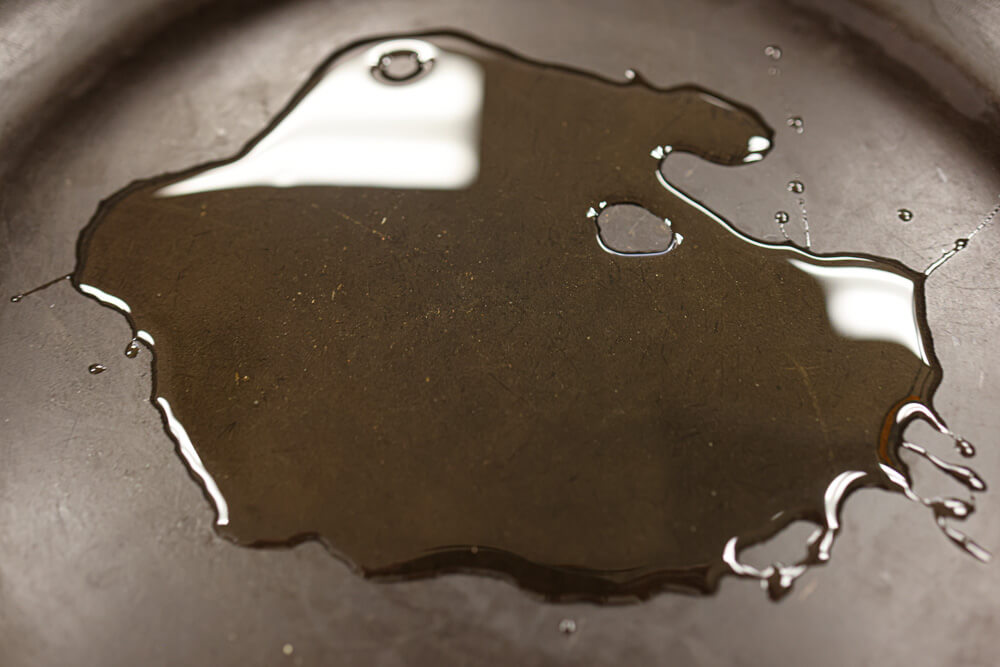
Heat the pan
-
When the oil reaches the smoke point lay the swordfish fillet in the pan placing it down away from you. You should hear the sizzle. Do not move the fish around, but leave it in place for 20 – 30 seconds so it forms that crust.

Lay the swordfish
-
Lean the pan towards you and with a spoon grab the sauce and baste (spoon the juices out of the bottom of the pan and spoon them over the fish). If you need to put a little more oil or butter in the pan you can depending on your preference. Then flip and do the same on the other side. If it gets too dark and has too much of a sear the fish becomes a little tough.

Sear Both Sides of the Fish Fillet.
-
Cook for 7min – 11min (flipping it every two minutes over medium-high heat). Since swordfish is firm, you can use tongs or a spatula to flip it over. Take it out of the pan when its at 130°.
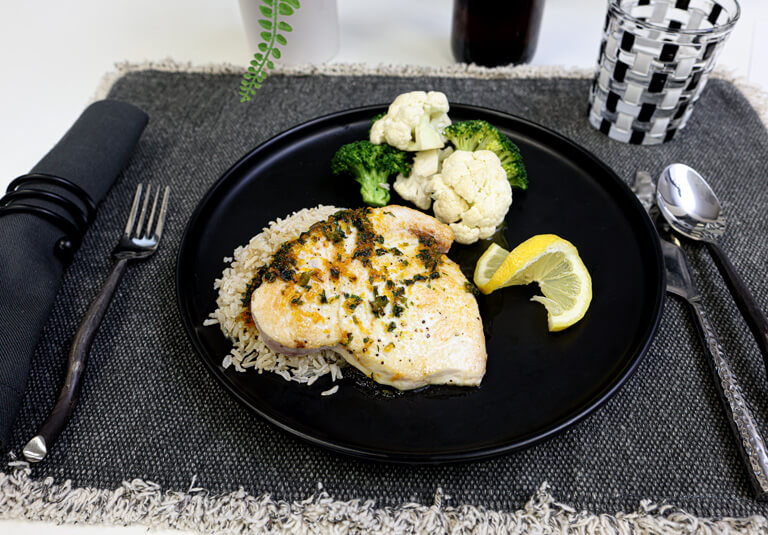
Serve and enjoy this swordfish recipe.
- Serve and enjoy this quick and easy swordfish recipe with relish and dig in! The texture should be be hefty, not flaky nor mushy.
Step 2: Pan Sear the Swordfish
Ideal serving temperature for swordfish is 140° Farenheit!
Every fish has characteristics. Swordfish has a meaty texture and is firm, so it won’t break on you when you flip it in the pan. Like fish it can easily become overcooked.
Swordfish Availability
Swordfish is available in the summer fresh or frozen. If the swordfish is frozen look for the blast-chilled fish. Blast-freezing at -100°F enables no ice crystals to form inside the muscle fiber of the fish so the muscle fibers can’t separate. If a protein is slowly frozen ice will form inside the muscle fiber, it will expand and break the cells, creating a mushy texture when thawed. This swordfish recipe can also be cooked directly from frozen.